Wisconsin Sea Grant works with education partners throughout Wisconsin and the Great Lakes Basin to develop educational resources centered around promoting Great Lakes learning. Each resource enables educators to teach Great Lakes Literacy Principles in formal and informal learning environments. For more information or assistance, send a message to the Water Librarian.
In addition to these resources, we also offer professional learning opportunities for educators throughout the year.
Explore the Great Lakes ONLINE
- Explore Lake Sturgeon
- Explore the Caddisfly
- Explore the Burbot
- Explore Shipwreck Stories
- Explore Aquatic Invasive Species and Shipwrecks
- Explore a Story Map about Indigenous Knowledge and the Great Lakes
- Explore Great Lakes, Great Reads (while stuck at HOMES)
- Explore the Wisconsin Sea Grant website for videos, podcasts, and publications.
- Explore your inner artist – Color the Great Lakes.
More resources are available on our COVID-era distance learning page.
Explore the Great Lakes WITH OUR EDUCATIONAL KITS
All resources are available for loan free of charge from the Wisconsin Water Library at UW-Madison. Any Wisconsin resident can borrow these materials and have them delivered to their local library via the statewide Library Delivery Network.
Aquatic Invaders Attack Pack
For: Grades 4 though 10
Topic: Aquatic invasive species
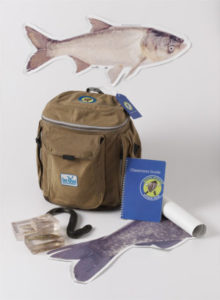 The Aquatic Invaders Attack Pack is a rucksack filled with materials that help students and others learn about aquatic invasive species (AIS) found in the Great Lakes. Children learn about problems caused by AIS and what can be done about them. Each pack includes preserved specimens of some of the most problematic AIS in the Great Lakes, rugged plastic fact sheets, a classroom guide and other materials. The packs are designed to complement the Nab the Aquatic Invader! website hosted by Illinois-Indiana Sea Grant.
The Aquatic Invaders Attack Pack is a rucksack filled with materials that help students and others learn about aquatic invasive species (AIS) found in the Great Lakes. Children learn about problems caused by AIS and what can be done about them. Each pack includes preserved specimens of some of the most problematic AIS in the Great Lakes, rugged plastic fact sheets, a classroom guide and other materials. The packs are designed to complement the Nab the Aquatic Invader! website hosted by Illinois-Indiana Sea Grant.
Fish-o-pedia Pack
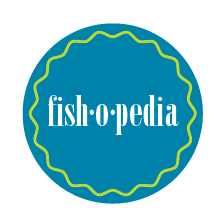 For: Ages 4 through 10
For: Ages 4 through 10
Topics: Great Lakes Fish
The Fish-o-pedia Pack is an education pack filled with materials to help teach students and other groups about Great Lakes fish. Each pack includes average size vinyl cutouts of twelve native and non-native Great Lakes fish. The pack also contains the Fish-o-Pedia cards – filled with facts and figures about each of the species. Also included is the 4th edition of The Life of the Lakes: a Guide to the Great Lakes Fishery (2019) Brandon C. Schroeder, Dan M. O’Keefe, and Shari L. Dann with Michigan Sea Grant.
Great Lakes and Water Science – Lesson plans and STEM kits
For: Ages 3 through 10
Topics: Varied
Ten lesson plans, newly updated in 2018, and three STEM kits are available for use. The lesson plans are interdisciplinary – they involve literacy, science and art on a water-related theme. The STEM Kits enhance the traditional children’s library or school storytime with a water science topic and an introduction to the essentials of the scientific method: observation, hypothesis formation, testing, more observation, recording and conclusion-building. Included in each kit are a topical “science chat,” read-aloud books, a science experiment or activity, songs and craft ideas. They are handy tools for teachers, librarians and informal educators looking for materials on water-related and Great Lakes topics. The lesson plans are downloadable from the website of the Wisconsin Water Library. The three STEM kits are physical kits that are available for checkout from the Wisconsin Water Library.
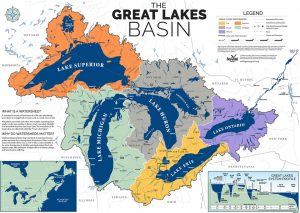 Great Lakes Basin Map
Great Lakes Basin Map
For: All
Topics: Varied
This 7 foot by 10 foot vinyl Great Lakes Basin map illustrates the 2,212 mile journey from the tip of Lake Superior out to the Atlantic Ocean. The map includes a depth profile of the lakes and major rivers within the system, shows the direction and volume of flow through each of the lakes, and represents the journey of water from Lake Superior out to the Atlantic Ocean. The map is available for checkout from the Wisconsin Water Library.
Great Lakes Track and Act
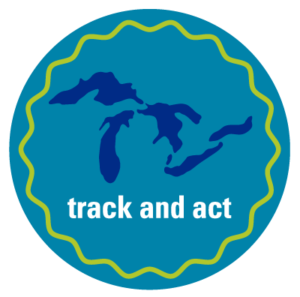 For: K – adult
For: K – adult
Topic: Marine Debris
The Marine Debris Tracker mobile app, created in 2010, is a joint initiative between the NOAA Marine Debris Program and the Southeast Atlantic Marine Debris Initiative (SEA-MDI), run by the University of Georgia College of Engineering. The tracker app is a great way to get involved in local and global data collection about the quantity, distribution and type of litter. The app records the debris location through GPS, allows you to select your target debris item(s), add a description to an item(s), attach photos of debris items to document, view the data on your phone and submit the data to SEA-MDI’s Marine Debris Tracker website for viewing and later download, as well as track statistics posted in real time (requires registration, which is available on the app).
The Marine Debris Tracker app contains 25 customized lists of commonly found litter items in different regions, with the Great Lakes Track and Act focused on the the Great Lakes basin.
The Great Lakes Track and Act project was developed by teachers from the Howard-Suamico and Pulaski school districts, Wisconsin Sea Grant Institute and the Inland Seas Education Association. Download the free Marine Debris Tracker app, through your app store or Android app on Google Play, select the Great Lakes Track and Act organization, and start tracking today!
Me and Debry!
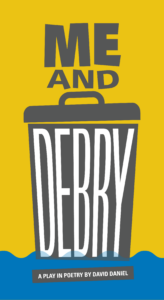 For: Grade 5 – adult
For: Grade 5 – adult
Topic: Marine Debris Prevention
New September 2023
Me and Debry is a half-hour, whimsical, audience participation, theatrical performance about litter (marine debris) prevention. The rhyming script was written by David Daniel of American Players Theatre. It is designed for both formal and informal educational settings. The play “stars” two characters typically cast to adults or advanced readers and features four “supporting” roles, typically performed by audience members. The play was designed for fifth grade students however, audiences of all ages will appreciate the central message of “If it’s to be, it’s up to me!”
The educational kit contains a copy of the full script, character scripts and the 8Rs documents in English, Spanish, and Hmong, props, and costumes.
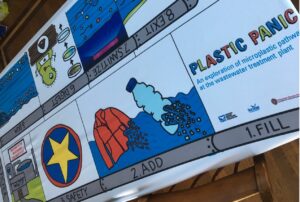 Plastic Panic
Plastic Panic
For: All
Topic: Plastics, Wastewater Treatment
Updated Summer 2023!
Model the journey water takes at a Wastewater Treatment Plant (WWTP) through a series of hands-on steps around a tabletop model. Learn about our microplastic pollution problem, and discover what happens to the pollutants as they enter and pass through a WWTP. Can be use for informal learning and can be adapted to other settings.
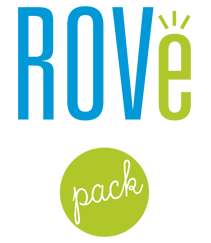 ROVe Pack
ROVe Pack
For: Middle school students
Topic: Engineering
Middle school students can experience the engineering process while learning about Great Lakes maritime history and underwater exploration with this loanable pack. The ROVe (Remotely Operated Vehicles and Engineering) packs provide a rich learning experience aligned to the engineering principles found in the Next Generation Science Standards. A ROVe Pack provides online lesson plans and the equipment necessary for teachers to carry out the engineering design process with students as they build their own simple ROVs within a regular classroom using common classroom supplies and a small children’s pool.
ROVe the Great Lakes
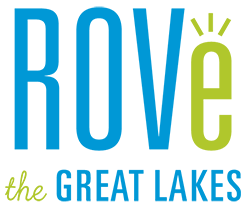 For: Middle school students
For: Middle school students
Topic: Maritime History and Underwater Exploration
Middle and high school students can experience Great Lakes maritime history and underwater exploration with this loanable pack. ROVe the Great Lakes provides a rich learning experience aligned with Wisconsin Model Academic Standards for Social Studies, Next Generation Science Standards, Common Core State Standards for Literacy and the Great Lakes Literacy Principles. Students will explore Great Lakes maritime vocabulary; maneuver a remotely operated vehicle (ROV); enhance their communication skills through information-gathering, presentation and creative writing opportunities; and learn about various careers, specifically maritime archeology, that use remotely operated vehicles.
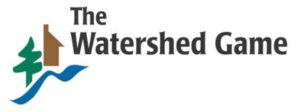 The Watershed Game
The Watershed Game
For: Stream model (Grade 6 to 8). Coast model (Grade 6 to 12)
Topic: Nonpooint source pollution and resilience
Participants in the Watershed Game learn about practices, plans, and policies that improve and protect the quality of a stream, lake, river or coastal region while making management choices about land use in a fun, and low-stress environment. The object of this team-building simulation is for each participant or team to use limited financial resources to reduce excess nonpoint source pollution (e.g., excess sediment, nitrogen and/or phosphorus) to levels that meet a clean water goal. The Watershed Game illustrates that cooperation is an essential part of managing water and land use. Participants learn to consider and involve all land uses within a watershed as they work to achieve their clean water goals.
Trash Trunk
For: K – adult
Topic: Marine Debris
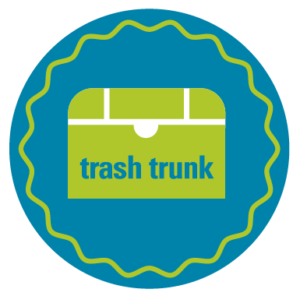 The Trash Trunk is designed for both formal and informal educational settings. The loanable trunk contains an Educator’s Guide with fourteen lessons and activities reprinted from a variety of sources, informational display cards and supporting materials needed to perform the activities. The activities are presented in three sections addressing the origins of marine debris, its impacts and what can be done. Educators may select a single lesson or develop a unit using Trash Trunk content, supplemental materials and common classroom supplies.
The Trash Trunk is designed for both formal and informal educational settings. The loanable trunk contains an Educator’s Guide with fourteen lessons and activities reprinted from a variety of sources, informational display cards and supporting materials needed to perform the activities. The activities are presented in three sections addressing the origins of marine debris, its impacts and what can be done. Educators may select a single lesson or develop a unit using Trash Trunk content, supplemental materials and common classroom supplies.




